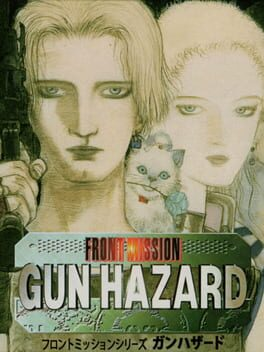Trivia Browser
Platform: Nintendo Switch
▲
1
▼
The N64 Controller that was released for Nintendo Switch Online's Expansion Pack can be used on any Switch game. However, it lacks X and Y buttons leading to some games being partially unplayable when someone attempts to play them with one.

▲
1
▼
 In the Japanese version, Dōbutsu no Mori +, two paintings that were present in the original Dōbutsu no Mori, the Dreadful Painting and the Novel Painting, are not obtainable in the normal course of play. However, they still exist in the game's code and can be legitimately brought over to a player's save file by importing one from Dōbutsu no Mori (via Nintendo of Japan's now-defunct Data Moving Service), though they can't be donated to the Museum. In the international release of Animal Crossing, however, these paintings are completely removed, and their index numbers instead point to duplicates of the DUMMY furniture item.
In the Japanese version, Dōbutsu no Mori +, two paintings that were present in the original Dōbutsu no Mori, the Dreadful Painting and the Novel Painting, are not obtainable in the normal course of play. However, they still exist in the game's code and can be legitimately brought over to a player's save file by importing one from Dōbutsu no Mori (via Nintendo of Japan's now-defunct Data Moving Service), though they can't be donated to the Museum. In the international release of Animal Crossing, however, these paintings are completely removed, and their index numbers instead point to duplicates of the DUMMY furniture item.It's likely that the decreasing accessibility of these paintings was due to the fact that their real-world equivalents, Edvard Munch's "The Scream" and Piet Mondrian's "Composition with Red, Yellow, and Blue", were still under copyright at the time. The Munch and Mondrian portfolios wouldn't enter the public domain until 2015, well after the Dreadful and Novel paintings were retired from the series.
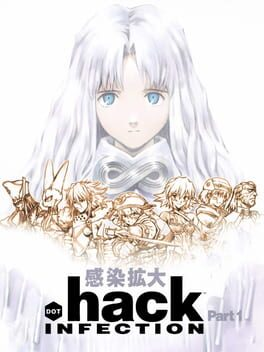
▲
2
▼
 One of the news articles and forum posts that appear in the game talk about the announcement of a new nonexistent handheld device from Bandai called the "WonderHawk", touted as the successor to the also nonexistent device the "WonderSwan Revolution". In reality, the only new models Bandai made after the original WonderSwan were the WonderSwan Color and the SwanCrystal. All three were originally meant to be competitors to the Game Boy Color and Game Boy Advance and all three were outsold by them, leading to the WonderSwan's discontinuation in 2003, the year after this game's release in Japan.
One of the news articles and forum posts that appear in the game talk about the announcement of a new nonexistent handheld device from Bandai called the "WonderHawk", touted as the successor to the also nonexistent device the "WonderSwan Revolution". In reality, the only new models Bandai made after the original WonderSwan were the WonderSwan Color and the SwanCrystal. All three were originally meant to be competitors to the Game Boy Color and Game Boy Advance and all three were outsold by them, leading to the WonderSwan's discontinuation in 2003, the year after this game's release in Japan.

▲
1
▼
 In the original game, the mural in Hyrule Castle Town was blurry and hard to make out. In Twilight Princess HD, the textures were updated with clearer, brand new designs. Notably, this updated mural features a Rito, a species which does not exist at the time the game takes place nor in the series' Child Timeline.
In the original game, the mural in Hyrule Castle Town was blurry and hard to make out. In Twilight Princess HD, the textures were updated with clearer, brand new designs. Notably, this updated mural features a Rito, a species which does not exist at the time the game takes place nor in the series' Child Timeline.Separately, in the Temple of Time, a picture frame can be found with a backwards message written in Hylian along the lower border. Translating it reveals a hidden developer credit: "Jack Kirby Crosby Made This".
Crosby, a graphics designer working for Tantalus on the HD remaster of Twilight Princess, later confirmed that he was responsible for both that credit and the mural, the latter of which was the result of a higher-up at Nintendo asking for some reliefs in Hyrule Castle Town to be redone in the same style as a shop he had re-textured. The new mural design was inspired by Crosby's own idea of a story for a Zelda game and drew additional inspiration from a Zelda art book without any story direction from Nintendo, meaning the events depicted therein are non-canon.
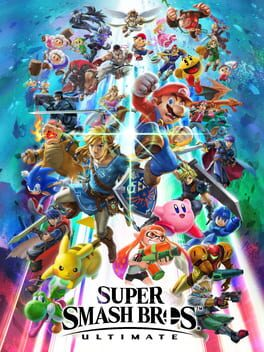
▲
1
▼
A Famitsu Column with game director Masahiro Sakurai revealed that Sora was able to get into the game because of a chance meeting that he had with a Disney executive at an unspecified awards ceremony where they expressed how cool it would be for the Kingdom Hearts protagonist to be a part of the Super Smash Bros. roster. This soon lead to negotiations between Nintendo, Square Enix, and Disney that eventually got the extremely highly requested character in Super Smash Bros. Ultimate. Before then, Sakurai admitted he and Nintendo thought getting the Disney-owned character was a total impossibility.

▲
1
▼
The German rating board deemed the game's gore and violence excessive and refused to rate the game at all. Since this had the potential to place the game on Germany's "List of Media Harmful to Young People", banning shops from either advertising or selling the game to customers of 18 years or older, Tecmo censored the PAL version to obtain a rating. A year later, Tecmo managed to obtain an 18+ rating for the uncensored release of Ninja Gaiden Black.

▲
1
▼
According to a 2003 the Sega Meisaku series interview with the game's director/designer Noriyoshi Ohba, he was asked what kind of work directing the game specifically entailed. He responded that since he was the only planner/designer working on the game, he "basically had to be involved in everything" from the planning, to designing the gameplay system, to the art (including which backgrounds to use, among other things), etc.

▲
1
▼
According to a 2003 the Sega Meisaku series interview with the game's director/designer Noriyoshi Ohba, he was asked why the game wasn't a stealth game despite the name "Shinobi" implying the protagonist would be more stealthy. Ohba responded that this was probably due to the team wanting to show off "how cool and badass ninjas are" as they can jump higher than normal people and have stronger physiques.

▲
1
▼
 When Kirby absorbs Sora and then uses his Magic, it is immediately clear that Kirby does not get a Keyblade of his own. Instead, Kirby uses an ethereal glowing weapon that resembles a keyblade but is entirely made out of light and sparkles that changes color depending on the spell. While this can be interpreted as being a restriction by Disney over the Keyblade's imagery, Masahiro Sakurai on Twitter chalked it up to being done for lore reasons as he said "...only Keyblade Wielders can use Keyblades..." implying that Kirby isn't "chosen" as barer of one and thus has to use the three spells differently.
When Kirby absorbs Sora and then uses his Magic, it is immediately clear that Kirby does not get a Keyblade of his own. Instead, Kirby uses an ethereal glowing weapon that resembles a keyblade but is entirely made out of light and sparkles that changes color depending on the spell. While this can be interpreted as being a restriction by Disney over the Keyblade's imagery, Masahiro Sakurai on Twitter chalked it up to being done for lore reasons as he said "...only Keyblade Wielders can use Keyblades..." implying that Kirby isn't "chosen" as barer of one and thus has to use the three spells differently.
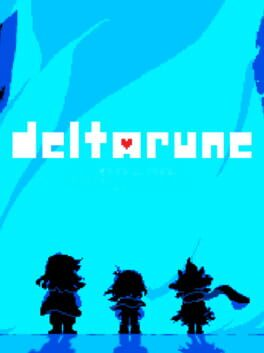
▲
1
▼
 In Chapter 2, if the player activates the Warp Door in Queen's mansion and uses it to revisit Cyber City, they will find one of the paths blocked off by an oversized toilet sprite. According to a tweet posted by Toby Fox during Chapter 2's development, the sprite was created at his request by the game's primary graphic designer Temmie Chang, only to end up absurdly large due to a miscommunication.
In Chapter 2, if the player activates the Warp Door in Queen's mansion and uses it to revisit Cyber City, they will find one of the paths blocked off by an oversized toilet sprite. According to a tweet posted by Toby Fox during Chapter 2's development, the sprite was created at his request by the game's primary graphic designer Temmie Chang, only to end up absurdly large due to a miscommunication.Furthermore, interacting with the toilet produces the message "(For some strange reason, a giant toilet-shaped toilet is blocking the way.)" This is a reference to the Iron Pencil statues in EarthBound, which produce the near-identical message "(For some weird reason, a pencil-shaped iron statue is blocking the path.)" when checked.

▲
1
▼
According to a 2001 developer interview published in V-Jump magazine, the game's character designer Tetsuya Nomura stated the main character's name, Tiida (Tidus in the international release), was the Okinawan word for "sun". After Final Fantasy VIII, the team wanted to give their next main character a brighter and more cheerful personality. Kazushige Nojima gave Tiida his name, and Nomura thought he had a "bright" motif for the character in mind considering his name's meaning.

▲
1
▼
According to a 1998 The Playstation magazine interview with the game's director Hideki Kamiya & writer Noboru Sugimura, they were asked about the chief of police character Brian Irons. Kamiya stated that he was originally going to be a normal police chief. His chubby exterior was still the same, but he would be seen properly wearing his uniform, talked like a normal officer, etc.
Sugimura credited himself as the one who made his deviant personality. Once they changed the police station building from a modern-day one to an old art museum, someone on the development team commented that it would be strange if there were medals just lying around in that place. Then Sugimura said "Well, we'll just have to make the police chief a weirdo then!", and Irons was what he came up with. He then created the character's hidden room, the idea that Chief Irons had been given bribes from Umbrella, and gave him "an insane grin on his face". Those who first saw the idea did not think it was very realistic, but Sugimura replied that "reality depends on persuasion and belief, so as long everything was consistent, it would appear real".
Kamiya stated that he was initially against turning Irons into a weirdo and protested it, but as the game's development progressed, the staff grew to like the idea and began coming up with "ridiculous details" to complement the personality shift. One example he cited are the hallway's torches leading to Irons' hidden room. The person who made it told him, "The Chief uses those to light a fire when he has his rituals!".
After confirming that Brian Irons' name appeared as a signature on the player select screen ID card in the first Resident Evil game, Kamiya revealed that wanted to use an "-ian" sound for both the first name and surname when coming up with the name, and decided that "Brian Irons" worked perfectly. He didn't think it would be anything more than just a lighthearted signature.
Sugimura commented that he didn't know that, and that when Resident Evil 2's development started the police chief was actually named Gordon until someone pointed out he was already given the name Brian Irons and stuck with it to connect it to the first game.
Sugimura credited himself as the one who made his deviant personality. Once they changed the police station building from a modern-day one to an old art museum, someone on the development team commented that it would be strange if there were medals just lying around in that place. Then Sugimura said "Well, we'll just have to make the police chief a weirdo then!", and Irons was what he came up with. He then created the character's hidden room, the idea that Chief Irons had been given bribes from Umbrella, and gave him "an insane grin on his face". Those who first saw the idea did not think it was very realistic, but Sugimura replied that "reality depends on persuasion and belief, so as long everything was consistent, it would appear real".
Kamiya stated that he was initially against turning Irons into a weirdo and protested it, but as the game's development progressed, the staff grew to like the idea and began coming up with "ridiculous details" to complement the personality shift. One example he cited are the hallway's torches leading to Irons' hidden room. The person who made it told him, "The Chief uses those to light a fire when he has his rituals!".
After confirming that Brian Irons' name appeared as a signature on the player select screen ID card in the first Resident Evil game, Kamiya revealed that wanted to use an "-ian" sound for both the first name and surname when coming up with the name, and decided that "Brian Irons" worked perfectly. He didn't think it would be anything more than just a lighthearted signature.
Sugimura commented that he didn't know that, and that when Resident Evil 2's development started the police chief was actually named Gordon until someone pointed out he was already given the name Brian Irons and stuck with it to connect it to the first game.
Franchise: Kingdom Hearts
▲
1
▼
The games' real-time action platforming aspect (in contrast to the turn-based combat of previous Square RPGs) came from a desire by series creator Tetsuya Nomura and others at Square of wanting to make a game extremely similar to and as thrilling as Super Mario 64 after they played that game and were enamored by it. However in order to make the concept stand on its own two feet, they decided to use Disney properties (which made Nomura in particular even more excited and obsessed with the project) as they believed Disney was the only thing that could compete with Nintendo and Mario.

▲
1
▼
When coming up with a name for the game and eventual series, the developers were attracted to the name "Kingdom" because, to Nomura and his team, the game's iconic premise of the different Disney movies' stories being rendered as "Worlds" for the player to visit reminded them of Disney's theme parks, such as the Magic Kingdom and Disney's Animal Kingdom, which are segmented into different "lands" or areas for visitors to explore. However, Square had difficulty in securing the name "Kingdom" alone, so they decided to add the word "Hearts" to it because such entities played an important role in the lore of the game and series.
Franchise: Kingdom Hearts
▲
1
▼
As revealed in by an interview with a head of Disney Interactive Studios in 2017, the original characters of Kingdom Hearts, such as Sora, although created by Square Enix, are wholly and entirely owned by Disney and the company can do as they please with them.

▲
1
▼
Disney heavily restricted the use of Mickey Mouse in the game especially as the central character like Square initially wanted. This was because Disney was nervous about the success of the game and did not want its possible failure leaving a black mark on the company and its mascot. Tetsuya Nomura stated that these contractual restrictions went so far as to have Disney allow Mickey to only make a minor cameo appearance (such as "in the background of a crowd" as Nomura put it). Spoiler:Nomura and his team got around this by having Mickey have an extremely important but brief role at the end of the game in the form of Mickey helping Sora close the Door to Darkness so no more Darkness gets out of it, separating the two. King Mickey even appears mostly in silhouette in this scene. When the first Kingdom Hearts became a humongous success for both Disney and Square, the former allowed the game developers to feature their mascot in a much more prominent role in the franchise from then onward.
Franchise: Double Dragon
▲
1
▼
The series struggles to maintain a consistent art style after the first game. Though fans found this inconsistency is part of their charm, the series' creator, Yoshihisa Kishimoto, had always lamented that to be the case:
"Many different people worked on Double Dragon's graphics over the years, and Technos often outsourced the game design to external companies, so there was no consistency to the branding or the quality," he says. "I personally find it unfortunate, but that's the way Technos handled its titles."
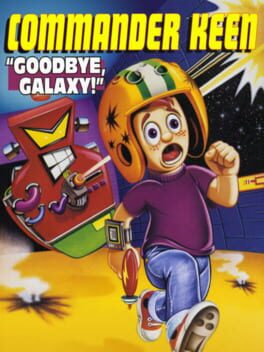
▲
2
▼
 One of the enemies in the "Secret of the Oracle" episode, Dopefish, was a "stupid little fish" created by the game's designer Tom Hall and described in-game as "the second-dumbest creature in the universe" (in reference to the dumbest creature in the universe, the Ravenous Bugblatter Beast of Traal from Douglas Adams' "The Hitchhiker's Guide to the Galaxy" franchise), and has since gone on to develop a cult following and become one of the biggest recurring in-jokes in the video game industry due to the sheer amount of games it has made appearances in (a large chunk of which having Tom Hall's involvement).
One of the enemies in the "Secret of the Oracle" episode, Dopefish, was a "stupid little fish" created by the game's designer Tom Hall and described in-game as "the second-dumbest creature in the universe" (in reference to the dumbest creature in the universe, the Ravenous Bugblatter Beast of Traal from Douglas Adams' "The Hitchhiker's Guide to the Galaxy" franchise), and has since gone on to develop a cult following and become one of the biggest recurring in-jokes in the video game industry due to the sheer amount of games it has made appearances in (a large chunk of which having Tom Hall's involvement).As of October 2021, Dopefish has made known appearances in Wacky Wheels, Rise of the Triad, Duke Nukem 3D, Shadow Warrior, Quake, Quake II, Quake III Arena, Jazz Jackrabbit 2, SiN, Descent 3, Battlezone, Kingpin, Daikatana, Anachonox, Max Payne, Hyperspace Delivery Boy, Commander Keen (2001), Return to Castle Wolfenstein, Eternal Daughter, Hitman 2: Silent Assassin, Red Faction, Congo Cube, The Frozen Throne expansion to Warcraft III: Reign of Chaos, SiN Episodes: Emergence, Chili Con Carnage, TAGAP: The Apocalyptic Game About Penguins, Fortress Forever, OFF, Dystopia, Deus Ex: Human Revolution, Pettington Park, Rocketbirds: Hardboiled Chicken, Warsow, Bombshell, Doom (2016), Wolfenstein II: The New Colossus, Ion Fury, and Doom Eternal.
Beyond video games, Dopefish notably made a cameo appearance in the animated series "Tiny Toon Adventures" in the 1992 episode "Toon TV" during the song "Toon In, Toon Out", which aired less than a year after the release of Commander Keen in "Goodbye, Galaxy!". Dopefish also cameoed in "Lakewood Plaza Turbo", the pilot episode to the 2017 animated series "OK K.O.! Let's Be Heroes".
The Official Dopefish Home Page:
http://dopefish.com/fishinfo.html
Tiny Toon Adventures - "Toon In, Toon Out":
https://www.youtube.com/watch?v=kKWD3JaCSO8#t=126
OK K.O.! Let's Be Heroes - Lakewood Plaza Turbo:
https://www.youtube.com/watch?v=SM6W8Oj-L3c#t=98
http://dopefish.com/fishinfo.html
Tiny Toon Adventures - "Toon In, Toon Out":
https://www.youtube.com/watch?v=kKWD3JaCSO8#t=126
OK K.O.! Let's Be Heroes - Lakewood Plaza Turbo:
https://www.youtube.com/watch?v=SM6W8Oj-L3c#t=98

▲
1
▼
 Updated versions of the game were distributed online via the Satellaview service in Japan; these versions support standard controllers as well as the Super NES Mouse. The "Yuushou Naizou Ban" version of the game also adds the picture "Dreaming of the Moon" by Mizota Hiroko of Tokyo, the winner of a contest associated with an earlier updated version of the game titled "Mario Paint BS-Ban".
Updated versions of the game were distributed online via the Satellaview service in Japan; these versions support standard controllers as well as the Super NES Mouse. The "Yuushou Naizou Ban" version of the game also adds the picture "Dreaming of the Moon" by Mizota Hiroko of Tokyo, the winner of a contest associated with an earlier updated version of the game titled "Mario Paint BS-Ban".
